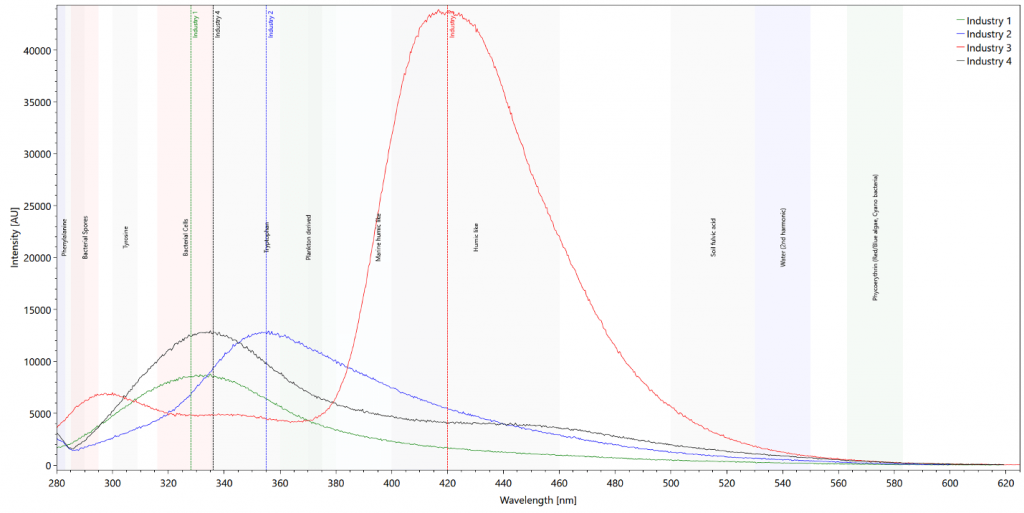Environmental protection, fast water quality assessments, and process optimization require a fast method for liquid analysis that delivers insight into the broad spectrum of parameters.
Increasing industrial waste, new substances, legal demands, shrinking budgets and increasing process complexity are all challenges faced by the wastewater industry. To manage these challenges you need a solution that collects the right data in the right frequency, paired with extensive industry knowledge and insights of the customers’ needs. Discover our range of application options for liquid analyses.
The goal of our monitoring system for drinking water is to analyze and assess hundreds of parameters through our fused Raman and Fluorescence sensor system. Continuous data provides insight into relevant components of the water and its changes. Dynamic processes can be controlled and methodological quality standard can be measured.
The quality of the raw and drinking water is monitored more frequently in a continuous way. This enables the assurance of quality or intervention in the case of an incident such as an act of pollution. To prevent such risks, a monitoring of relevant parameters should be available continuously in real-time.
In order to manage an efficient plant and to achieve the required quality targets, monitoring of the wastewater should be done at different steps of the treatment process, starting from the point of discharge into the sewer system. The continuous tracking can help to control or regulate the treatment of the wastewater plant. Better knowledge of possible pollutants can save trouble for plant operation and consumers.
Poor sensor performance in present real-time NO3/NO2 sensors is due to the present methods, using UV absorption, which is very susceptible to errors due to interference from organic and other compounds found in wastewater along with the NO3/NO2 which absorb equally and give false positive readings of the NO3/NO2 in the wastewater. As a result present sensors do not enable accurate nitrogen reduction dosage, a large cost component of waste water treatment. Large savings are possible when accurate real-time measurements are employed.
Dissolved Organic Carbon (DOC) is operationally defined as the amount of organic carbon based compounds that can pass through a 0.45 µm filter. Measurement is usually conducted in the laboratory using expensive benchtop analysers that oxidize organic carbon in the water sample to form carbon dioxide.
Real-time data of this parameter is important for assessing organic load through water treatment works and can be used for process control and filter management.
All public water systems must monitor for the microbiological quality of their drinking water on a regular basis. Samples are analyzed for total coliform and, if necessary, fecal coliform.
Our system detects coliforms in real-time using a combination of wavelengths in the bacterial and tryptophan wavelength range.
Removing dissolved organic matter (DOM) from the source water is critical for the drinking water treatment process; the low molecular weight hydrophilic fraction of DOM is generally recalcitrant to removal by coagulation, and the DOM bypassing the coagulation/filtration stages of treatment will likely react with the disinfecting agent in the end of the treatment process, leading to the formation of potentially carcinogenic disinfection by products (DBPs) such as trihalomethanes (THMs). Each specific fraction of DOM reacts with a particular disinfecting agent to form different DBPs, some with higher toxicity and carcinogenicity than others and varying on health guidelines values.
The spectral broadness of the system is ideal for a fingerprinting application.
Thresholds over the whole wavelenghts regions can be set individually, either manual or automatic using our Machine Learning approach.

The spectra shows an incidence of an unusual pollution from an industry wastewater which was measures at the entrance of the WWTP.
The data was then used to charge the excess waste that was not stated towards the plant.

Due to the nature of the broadth of the spectral measurement range and the sensitivity of the laser-induced measurement, many applications can be defined, of which here are some examples.

Nitrite and Nitrate emit distrinct peaks at their respective wavenumbers in the Deep UV with a very good specifity. Measurement time takes only seconds

Chemical Oxygen Demand (COD) analysis, is an accurate method that is used at municipal wastewater treatment plants for process monitoring and to aid in process control

Heatmaps help to gain an overall understanding with valuable data and insights for plant dynamics and optimizations. Data are always accessible in detail for analysis

The high sensitivity of the laser-induced fluorescence (LIF) shows distinct differences in pure waters and can be used to assess even ultra-pure water for organic remains

Water filters not working properly can cause severe issues such as health hazard due to biofilm growth. Filter costs can be reduced and managed by precise tracking.

Immediately know when something is not working or behaving as expected and detect what might be responsible by using the fingerprinting database